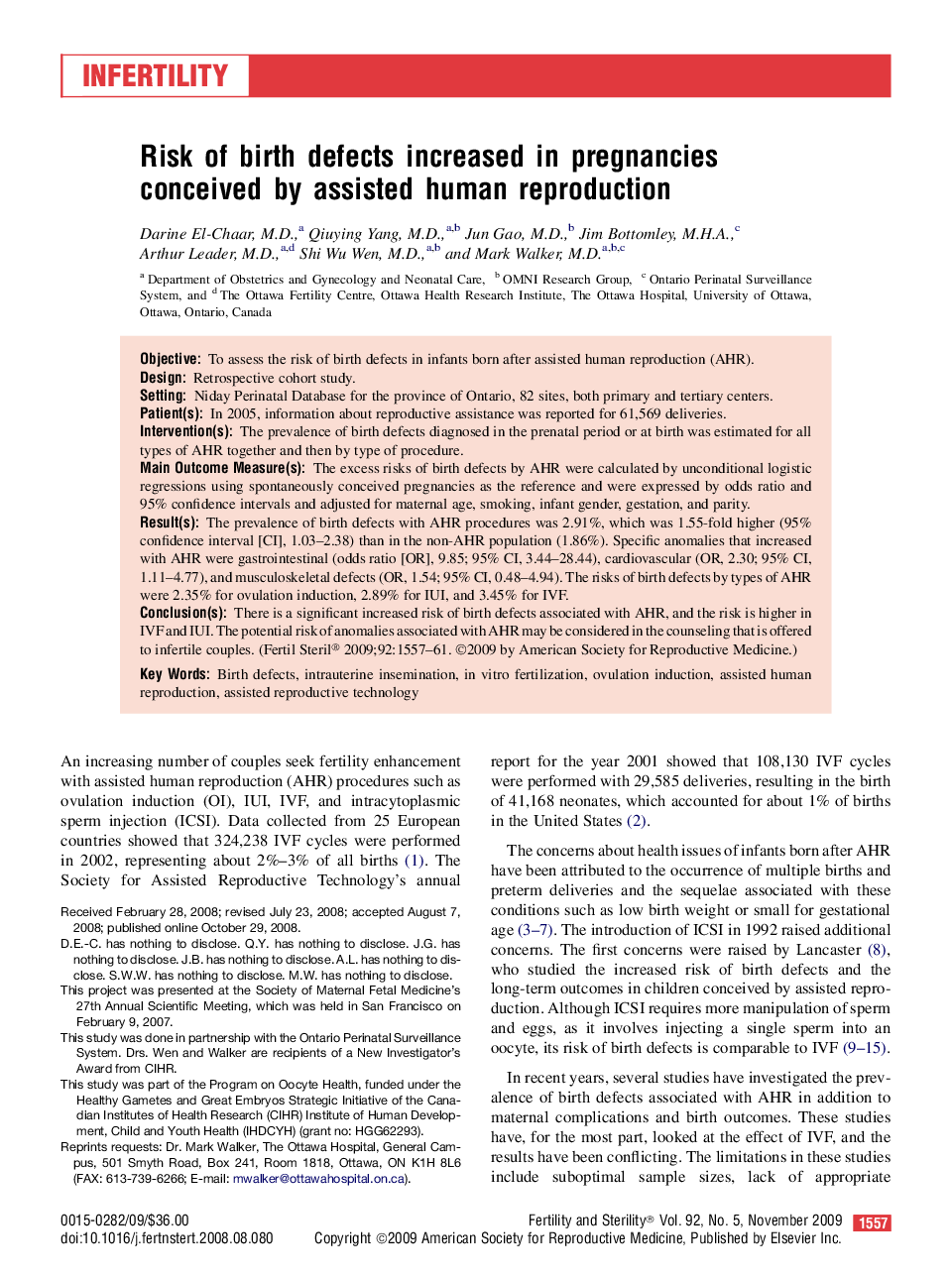| Article ID | Journal | Published Year | Pages | File Type |
|---|---|---|---|---|
| 3941058 | Fertility and Sterility | 2009 | 5 Pages |
ObjectiveTo assess the risk of birth defects in infants born after assisted human reproduction (AHR).DesignRetrospective cohort study.SettingNiday Perinatal Database for the province of Ontario, 82 sites, both primary and tertiary centers.Patient(s)In 2005, information about reproductive assistance was reported for 61,569 deliveries.Intervention(s)The prevalence of birth defects diagnosed in the prenatal period or at birth was estimated for all types of AHR together and then by type of procedure.Main Outcome Measure(s)The excess risks of birth defects by AHR were calculated by unconditional logistic regressions using spontaneously conceived pregnancies as the reference and were expressed by odds ratio and 95% confidence intervals and adjusted for maternal age, smoking, infant gender, gestation, and parity.Result(s)The prevalence of birth defects with AHR procedures was 2.91%, which was 1.55-fold higher (95% confidence interval [CI], 1.03–2.38) than in the non-AHR population (1.86%). Specific anomalies that increased with AHR were gastrointestinal (odds ratio [OR], 9.85; 95% CI, 3.44–28.44), cardiovascular (OR, 2.30; 95% CI, 1.11–4.77), and musculoskeletal defects (OR, 1.54; 95% CI, 0.48–4.94). The risks of birth defects by types of AHR were 2.35% for ovulation induction, 2.89% for IUI, and 3.45% for IVF.Conclusion(s)There is a significant increased risk of birth defects associated with AHR, and the risk is higher in IVF and IUI. The potential risk of anomalies associated with AHR may be considered in the counseling that is offered to infertile couples.
